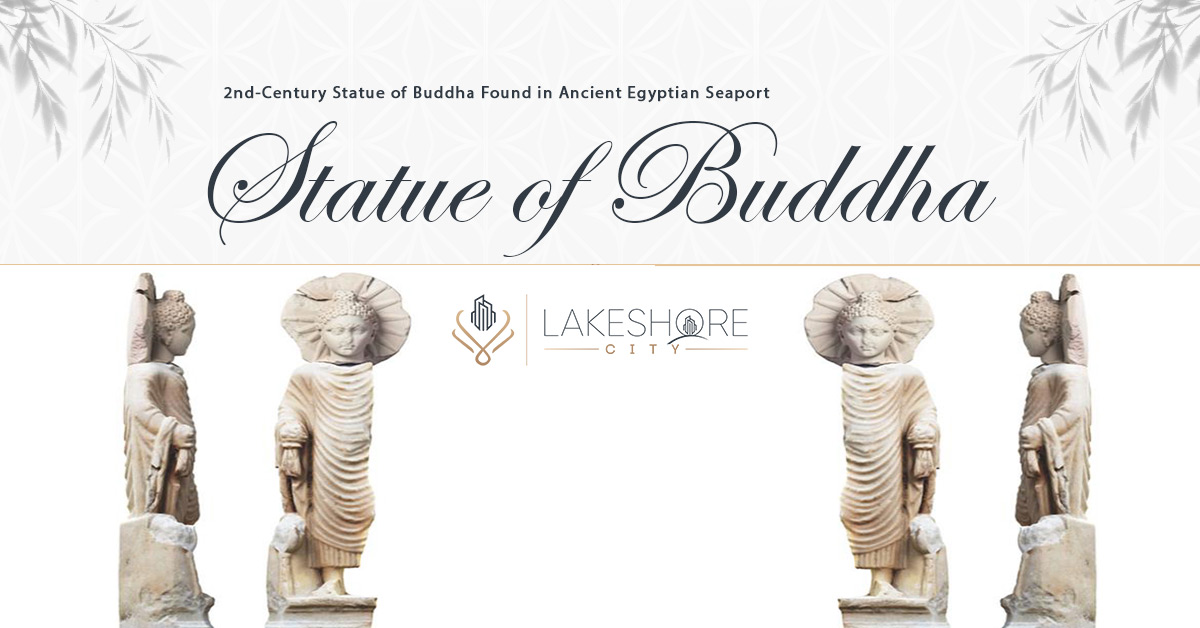CAIRO: A Buddha statue from the Roman era has been discovered by archaeologists in the ancient Egyptian port of Berenike.
Egypt’s Supreme Council of Antiquities announced that the discovery was uncovered during excavations of the city’s ancient temple by specialists from the Polish American dig taking conducted on the western banks of the Red Sea.
The council has overseen the archaeological mission’s activities at the site since 1994.
The study team’s recent discovery of crucial new evidence of commercial relations between Egypt and India during the Roman era was highlighted by the secretary-general of the Council, Mostafa Waziry.
To paraphrase what he said: “Egypt was centrally located on the trade route that linked the Roman Empire to many regions of the ancient world, including India.”
Berenike was the most important port along Egypt’s Red Sea coast at the time, and it was there that ships carrying spices, semiprecious stones, textiles, and ivory from India unloaded.
Camel caravans carried the products through the desert to the Nile River, where they were loaded into ships bound for Alexandria and the rest of the Roman Empire.
According to Mariusz Gwiazda, the Polish director of the mission’s team, the Buddha statue was likely carved from stone taken from an area south of Istanbul and donated to the temple by one or more wealthy Indian merchants.
The Buddha is shown in a standing position, with part of his garment held in his left hand, in this 71-centimeter statue. Gwiazda explains that the Buddha’s “radiant mind” is represented by the sunray that encircles his head, and that the lotus flower at his feet symbolizes his enlightened character.
A Sanskrit inscription from the reign of Roman Emperor Marcus Julius Philippus (244–249), popularly known as Philip the Arab, was also discovered by archaeologists working on the temple.
United States Mission Director Steven Sidebotham remarked, “It seems that the inscription was not from the same date as the statue (of the Buddha), which is probably much older, as other inscriptions in the same temple were in Greek, dating back to the early first century.”
Two coins from the Satavahana empire in central India, minted in the second century, were also discovered.
Berenike, located about 140 kilometers south of Marsa Alam, was established around 275 B.C. and named after the mother of Egyptian King Ptolemy II (283–246 B.C.).
During the Roman era, the city flourished because it served as a major hub for trade between the Mediterranean Sea and the Indian Ocean.
The diversity of human life in Berenike is attested by the human remains and other artifacts discovered by Sidebotham’s team.
Our Featured Article:
Read More: What is Buddhism Theravada?
Don’t miss the chance to invest with Lakeshore! Secure your investment today by investing your financial investment with Lakeshore in the following available options like Lakeshore City, Lakeshore Club, and Lakeshore Farms.
For More updates, please Contact +92 335 7775253 or visit our website https://lakeshorecity.com/
Lakeshore City is the upcoming elite lifestyle at Khanpur Dam. Offering no parallel amenities for the members and owners of distinguished farmhouses.
Become Part of Luxurious Lifestyle
Contact: 0335 7775253



